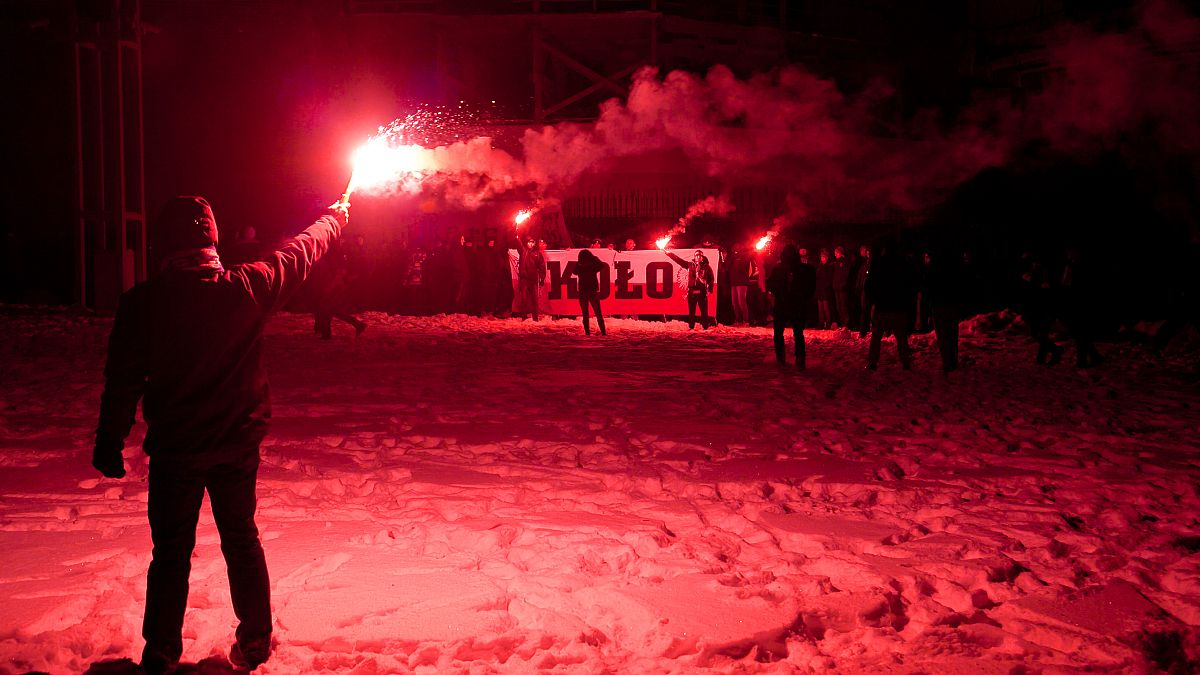Two decades ago fascist groups had the same ideology in Poland as today, but their position in society was very different.
My so-called friends - skinheads and football hooligans with neo-fascist views – have beaten me up multiple times. I have had my nose broken, a tooth knocked out and bear the scars of a knife wound in my hand. They even set pit bull dogs on me.
Although it has been nearly twenty years since I left the group, their acts of abuse and violence have never stopped. I was an important figure and they are still afraid that I could use my knowledge to incriminate them. That's why I don't want to use my real name in this article.
Our group did not have a formal structure, but everyone was good at something and so took responsibility for some tasks. Those who trained in martial arts were sent to the front line for fights. Others were in charge of communication and kept contacts with groups from other cities.
Together with two comrades, I implemented the neo-fascist ideology. I read books containing various right-wing ideologues including the pre-war politician Roman Dmowski, who is considered to be the father of the Polish nationalist ideology due to his anti-Semitic, anti-German, pro-church views. I remember that someone even once brought us a badly-translated copy of Hitler’s Mein Kampf.
At that time we did not have any formal meetings to discuss our views or ideas. Back then music was the major means of spreading the nationalist ideology. Concerts of neo-fascist bands were organized with the utmost caution. Because the name of location was kept secret until the very last second, we waited for messages sending us to a secret location somewhere in a forest where drivers were waiting to bring us to the concert. I still remember this special feeling of a mystery and thrill.
The same security measures were applied around the organisation of events celebrating Adolf Hitler’s birthday or glorifying former SS-soldiers - with frequent Nazi salutes becoming the common feature.
Back then I would never have imagined turning up to school wearing clothes emblazoned with fascist emblems. I was ashamed to express my views in public. Today, I see my former friends openly expressing their racist and disdainful opinions towards refugees and other minorities without embarrassment. This was socially unacceptable 20 years ago. Now it has become fashionable.
Fetishisation of strength and violence
When I became a skinhead I was just a 14-year-old teenager heavily influenced by peer pressure. I grew up in an impoverished district with a football stadium at its centre and dysfunctional families being seen as the norm. I was different from other children in my neighbourhood because my parents had university degrees. At the same time, like any kid at this age, I was insecure and sought group acceptance.
I think these psychological pressures were intertwined with the collapse of Communism in Poland in the early 1990s and the birth of democracy and capitalism. The movement embraced the American pop culture of MTV music videos and fancy trainers. But at the same time, we were not able to afford that kind of clothing or shoes. With hindsight, this fostered a sense of injustice and unequal opportunities in life, but back then we did not have a rational explanation for our feelings.
In search of explanations, young people joined different groups and subcultures, some become punks hoping to find answers in liberal ideology, while we turned to the nationalist doctrines. Instead of focusing our attention on finding doable and realistic solutions such as learning and working to improve our chances, it was easier for us to believe that an abstract enemy was to be blamed for the challenges we faced, and so that enemy had to be defeated.
Since nationalist doctrines like fascism, nationalism or Nasizm are built on the fetishization of strength and contempt for another person, violence and fights were commonplace. But twenty years ago we did not attack foreigners, refugees or religious minorities. The fights were mainly between the subcultures. Skinheads and football hooligans would fight punks, for instance.
One-way ticket
It is quite easy to sign up to a radical movement, but it is a one-way ticket. There is basically no return. I am sure that there are thousands of boys and girls in Poland who cannot quit their membership of the ONR or All Polish Youth.
You have to bear in mind that fanaticism is deeply rooted within these groups. It's almost unthinkable to try to explain to a fanatic that you met a girl, fell in love and prefer to go with her to the cinema instead of participating in another fight.
I spent four years with the group. And when I decided to take off my bovver boots and renounce the violence, I was forced to change my high school, as there was no one who would hold out a helping hand to me and give me another chance. I was ostracized and felt incredibly isolated.
Today, terrified mothers of sons who got radicalised through membership in the ONR or similar groups give me regular calls asking how to help their children escape this environment. They face the same helplessness as I did myself twenty years ago. It is incredibly disappointing that still there is no single organisation providing support for people who want to leave radical groups.
The author was a member of a right-wing skinheads’ group in Poland during the early 1990s. After he left the group, he graduated from a university and works in an insurance company today. He told his story through Natalia Ojewska. His name was changed for security reasons.
